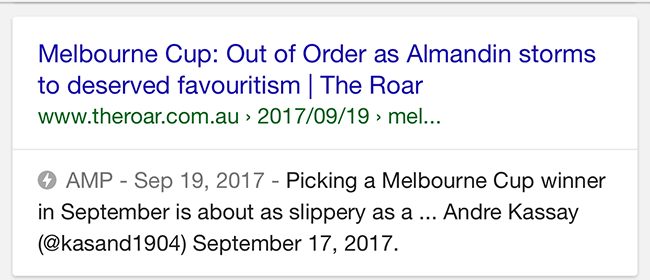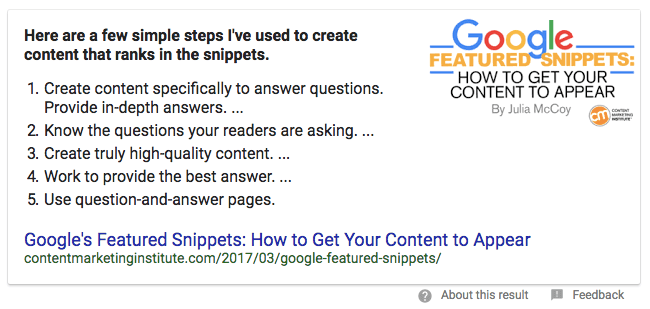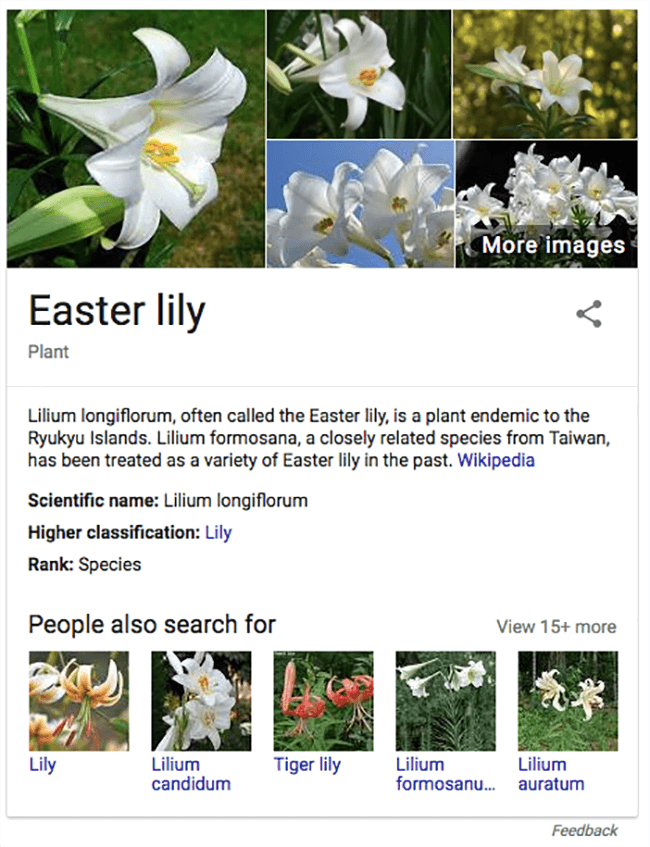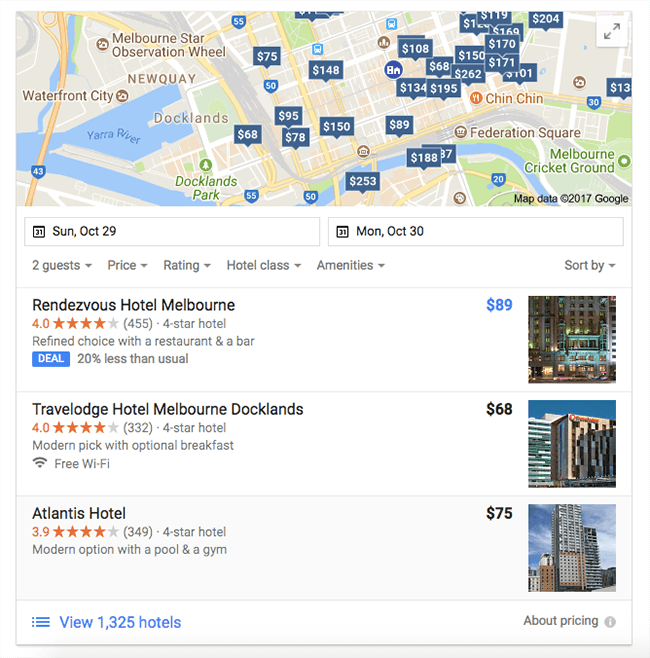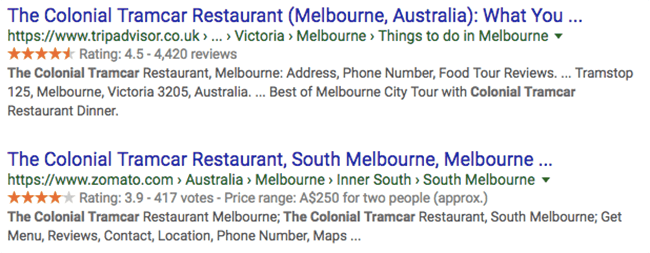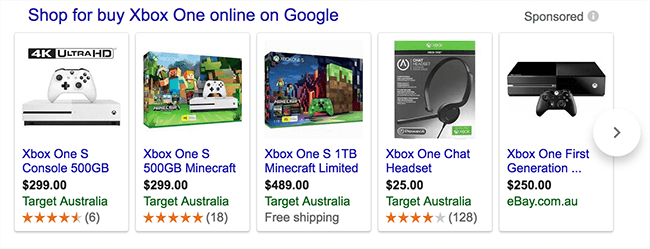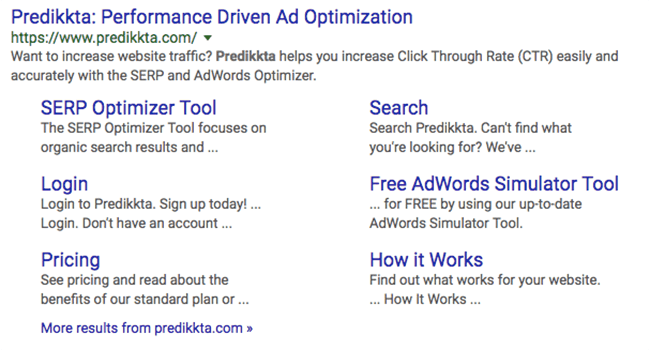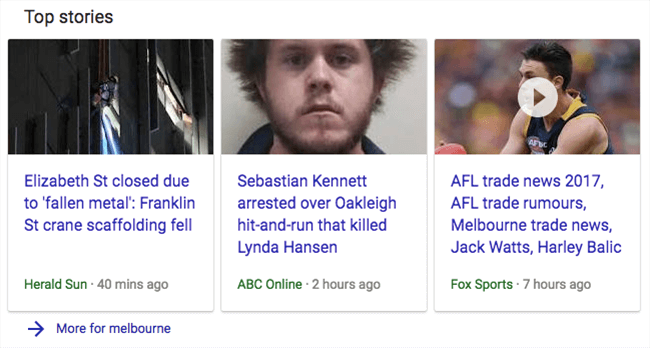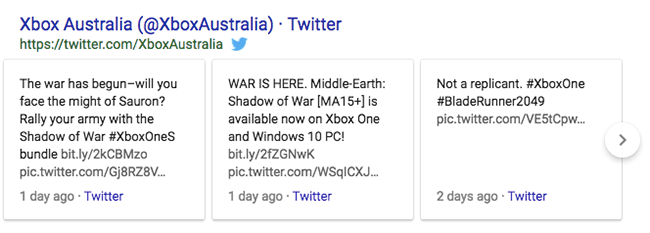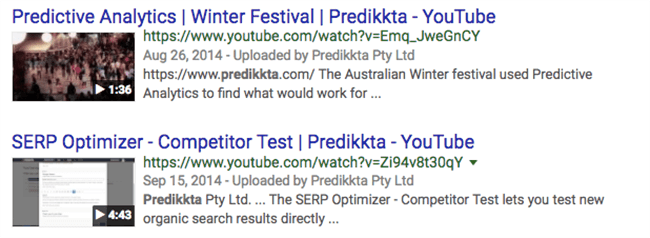The Search Engine Results Page, commonly shortened to SERP, is what is displayed after you type any query into a search engine such as Google, Bing, or Yahoo. What you see is essentially what the respective search engines have calculated as being the best or most relevant results for your query.

SERPs have evolved considerably over the years, and now include various other features that enhance or support the results. The results, also called organic results, haven't changed too much, and consist of three common components: the title, the URL, and the description. The first part of each result, the title, is larger than the rest of the result, and is immediately followed by the page URL. The main part of the result is the description, which is taken from the meta description of each page. They are typically 2-3 lines long, displaying 160-270 characters, and words relating to your query may appear in bold.
As noted, search engine results pages have changed over time, and while improving your company's natural ranking in organic results is still an important aspect of SEO, it is no longer the only thing to consider. With search algorithms constantly being tweaked to always show the best, most relevant results, getting your onto the first page of search engine results is much harder, but not impossible. A strong, well structured AdWords campaign can still get you brand onto the front page, even if you don't feature in the top organic results, but there are newer features of SERPs that you need to consider too.
As with organic results, there aren't any actions you can take to guarantee inclusion in any of the SERP features explored below, but paying close attention to SEO best practices will definitely improve your chances.
Not all search results include ads, but when they do these will appear above and/or below organic results. They look very similar to organic results, except for the small AD label to the left of the URL. The placement of ads is based on perceived relevance and usefulness in relation to the search query, a few other undisclosed factors, and the value of the advertiser's bid.
Accelerated Mobile Pages (AMP) is an open-source initiative driven by Google. The purpose of AMP is to allow the creation of web pages and ads that load near instantly, resulting in a better experience for users, especially on mobile devices. Accelerated Mobile Pages appear in organic results on mobile devices, with an AMP label to the left of the content description.
There are a few different versions of the Answer Box, and like Featured Snippets they typically appear at the top of organic results, and in response to a question type query. Some, like Featured Snippets, will extract the most relevant information from websites (and include a link to the website), while others, such as date and time queries, or unit conversions, will not.
Like most SERP features, Featured Snippets don't show up in all search results, but when they do they appear above the organic results, but below any ads. They typically display in response to question type queries: how, who, what, where, etc. Unlike organic results, featured snippets display around 40-50 words, either as a paragraph, or bullet points. Although they are great for brand visibility and credibility, they can lead to lower click-through-ratios (CTR), especially if the snippet fully answers the user’s query.
Image packs typically appear as a row of images related to the query, and clicking on any image will redirect you to Google Images tab.
The Knowledge Panel, sometimes incorrectly referred to as Knowledge Graph, usually appears to the right of organic results on desktop computers, and above organic results on mobile devices. They are powered by the Google Knowledge Graph, and typically provide in-depth information and images relating to certain queries. They could appear in response to queries relating to famous people, structures, and other objects, or in relation to a search for a specific business. Having a verified Google My Business profile can help ensure that your business information is correct, but it does not guarantee inclusion in a Knowledge Panel.
The Local Pack is only shown in response to location specific business queries, such as "coffee shops nearby", etc. The Local Pack includes three listings that are deemed to be the most relevant, along with a map showing their locations. Clicking on a listing will bring up a larger map, with a Knowledge Panel overlay providing more information for the local business.
Organic search results will sometimes include a small, drop-down accordion panel of related questions. Clicking on any related question reveals something similar to a Featured Snippet, along with a link to the source page. The questions are algorithmically generated by Google, with the answer also selected by Google based on relevance, and content that answers the question in the most specific way.
Some organic results will include reviews and/or ratings, just below the URL. Google does not reveal what criteria they use in deciding whether or not to include reviews, but pages must use Schema markup for ratings and/or reviews to be considered.
These are actually paid ads that, like AdWords, appear right at the top of search results. They are visually different to AdWords in that they include an image for each product, along with the price.
Searches for brand or domain names will sometimes see the top result displaying along with site links to specific pages for the domain. These not only help users get to the page they are looking for faster, but can also lead to significantly higher CTRs. Having a clear site structure, including a sitemap, and using SearchAction Schema markup are important, but again don't guarantee that your site will include site links on SERPs.
The Top Stories panel displays in response to queries linked to time-sensitive news stories. Although dominated by big publishers, it is possible for smaller websites to also feature if they publish original news about recent events, and limit advertising.
Technically these are true organic results since they link to Twitter, but they do promote brand visibility. The Tweet Pack only displays in relation to popular people, brands, events, or trending topics, displaying no more than three top Tweets on desktop, and a carousel on mobile.
Videos only show if very relevant to the query, typically linking to YouTube or Vimeo video content, but also to pages that include video content and use video markup.
< Back to Definitions
Organic Search Result >


